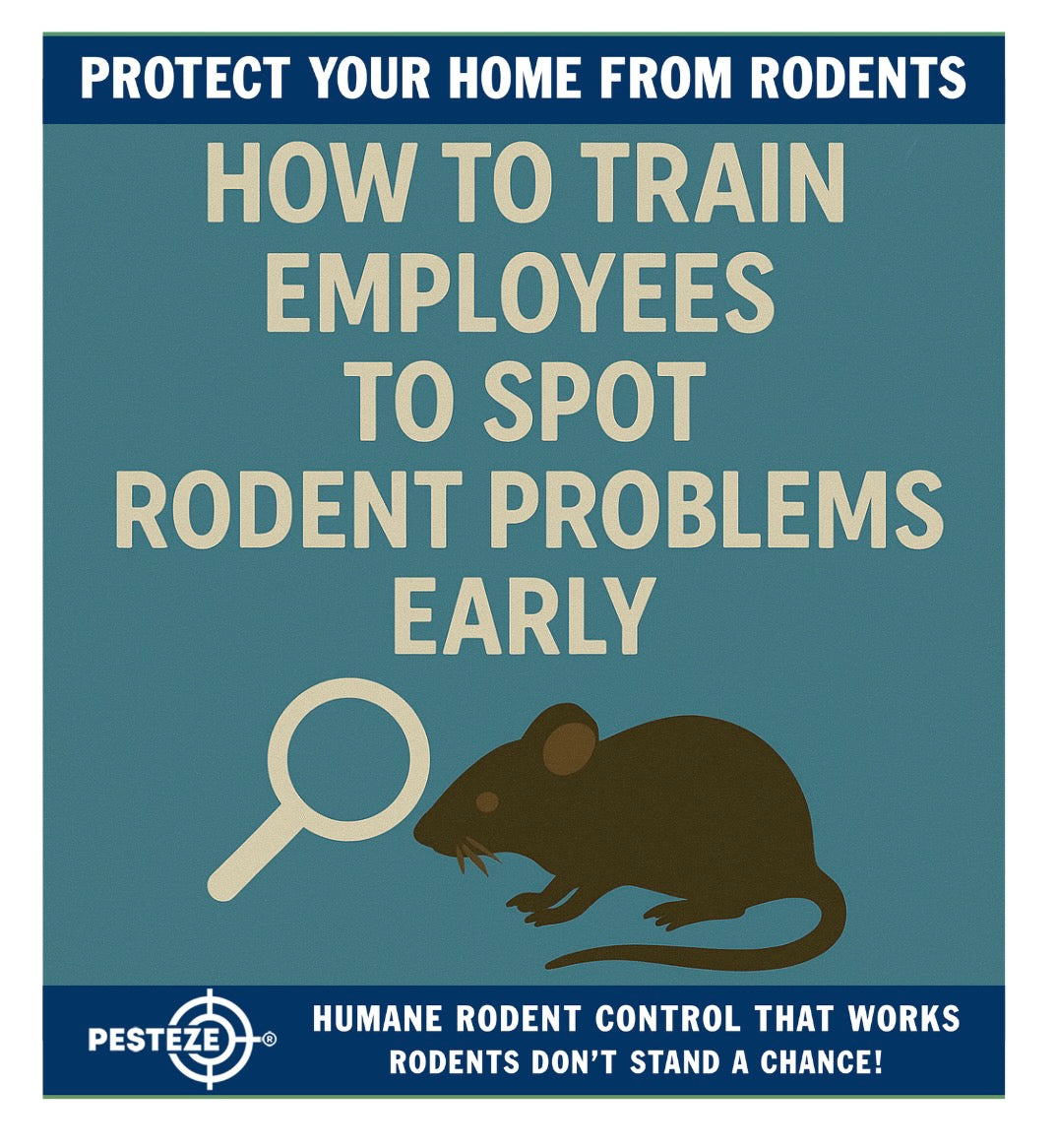HOW TO TRAIN EMPLOYEES TO SPOT RODENT PROBLEMS EARLY

HOW TO TRAIN EMPLOYEES TO SPOT RODENT PROBLEMS EARLY
SUMMARY
Training employees to spot early signs of rodent activity is crucial for preventing infestations in your business. By empowering your staff with the knowledge of common rodent behaviors and signs, you can catch problems before they become costly and disruptive. Learn how to train employees to be vigilant and proactive.
FEATURES
-
Identifying Common Signs: Teach employees how to recognize droppings, gnaw marks, and tracks.
-
Proper Sanitation Practices: Instruct employees on maintaining a clean, clutter-free environment to reduce rodent attractants.
-
Inspecting for Entry Points: Train staff to identify potential rodent entry points around the building.
-
Monitoring Rodent Activity: Equip employees with the knowledge of how to monitor traps, bait stations, and rodent tracking.
-
Reporting Procedures: Establish clear guidelines for employees on how to report rodent sightings or concerns.
- Ongoing Education: Regularly update staff on new rodent prevention strategies and best practices.
DESCRIPTION
Training employees to spot rodent problems early is a critical component of any successful pest management strategy, especially in businesses that deal with food, retail, or hospitality. Rodents can cause significant damage, contaminate products, and present health risks, so it’s essential to empower staff members with the tools they need to spot signs of rodent activity early on.
One of the first things to teach employees is identifying common signs of rodents. This includes recognizing droppings, which are often found along walls, behind appliances, or near food sources. Employees should also be taught to look for gnaw marks on packaging, furniture, or walls, and to keep an eye out for tracks or rub marks left by rodents traveling along walls and in hidden spaces. These early indicators can help detect rodent presence before it becomes a full-blown infestation.
In addition to spotting signs of rodent activity, it’s important to train employees on proper sanitation practices. A clean and clutter-free environment is key to preventing rodent infestations. Staff should be taught to store food in airtight containers, clean up crumbs and spills immediately, and regularly sanitize the workplace, especially areas where food or waste is present. Proper waste disposal is also critical, as it prevents attracting rodents in the first place.
Employees should also be trained to inspect for entry points. Rodents can squeeze through very small gaps, so staff should be educated on how to look for holes or cracks in walls, windows, doors, and around plumbing fixtures. Knowing where these entry points are can help prevent rodents from gaining access in the first place.
Once rodent control measures like traps or bait stations are in place, it’s essential for employees to understand how to monitor for rodent activity. Employees should be trained to regularly check traps and bait stations, take note of any rodent activity, and ensure that these devices are in good working condition. Early detection through monitoring can help prevent a small problem from escalating.
Establishing clear reporting procedures is also crucial. Employees should be aware of the steps to take if they encounter signs of rodent activity, including who to report it to and how to document their findings. Having a clear process helps ensure that rodent issues are addressed quickly and effectively.
Lastly, ongoing education is key to keeping rodent control a priority. Regularly updating staff on new rodent prevention strategies, changes to the workplace environment, and any new developments in pest control techniques can help maintain vigilance. Scheduling periodic training sessions can reinforce the importance of early detection and prevention.
By training employees to recognize the signs of rodent problems early, businesses can minimize the impact of an infestation and ensure a safer, cleaner, and more compliant environment.
- Nikita Gulrajani


Comments 0